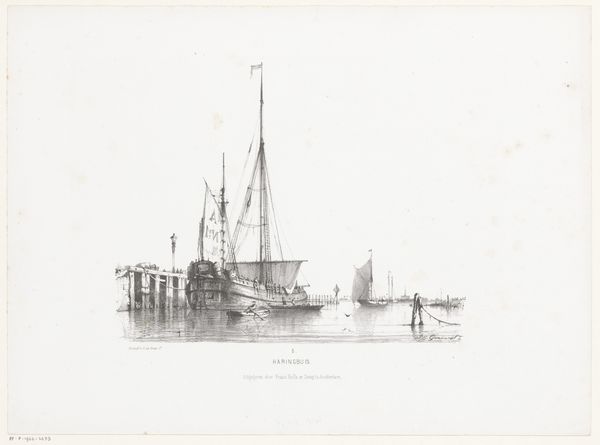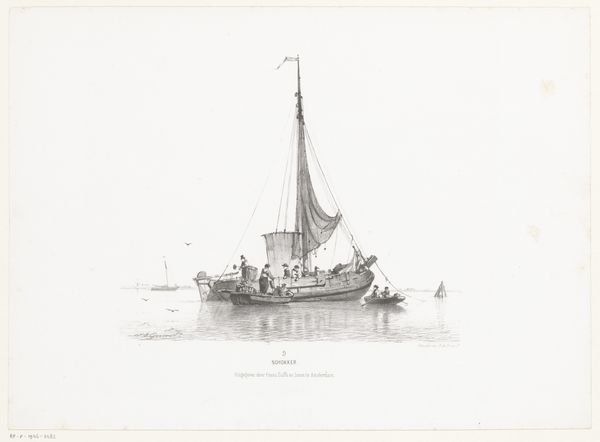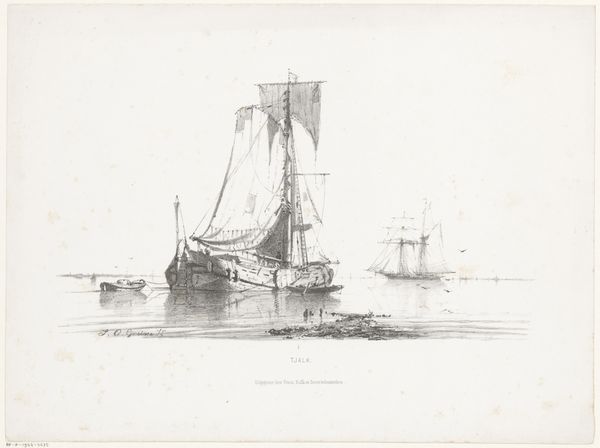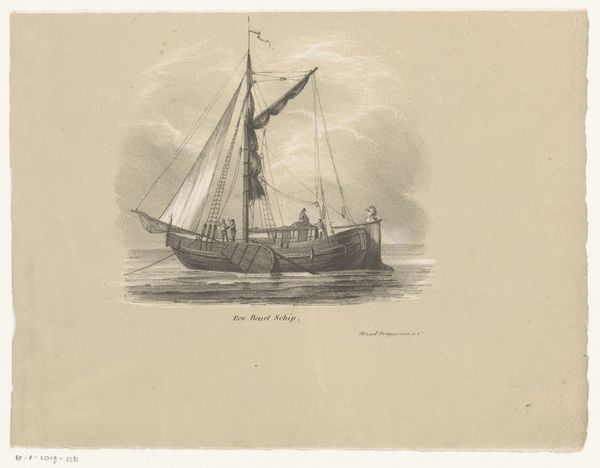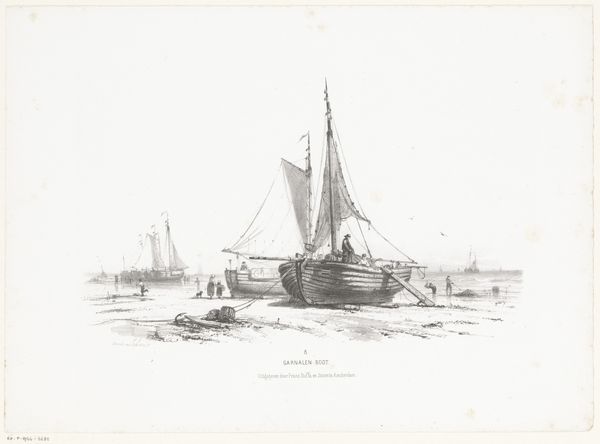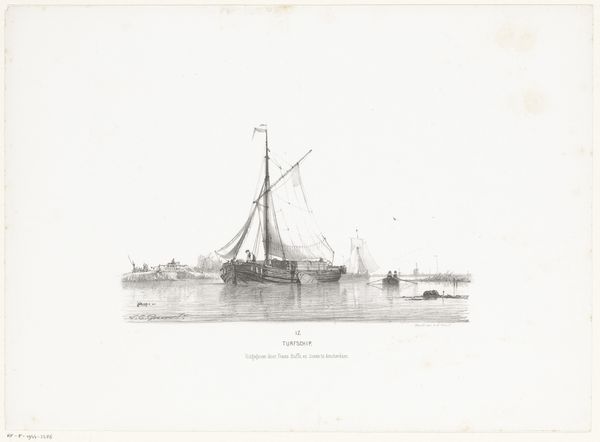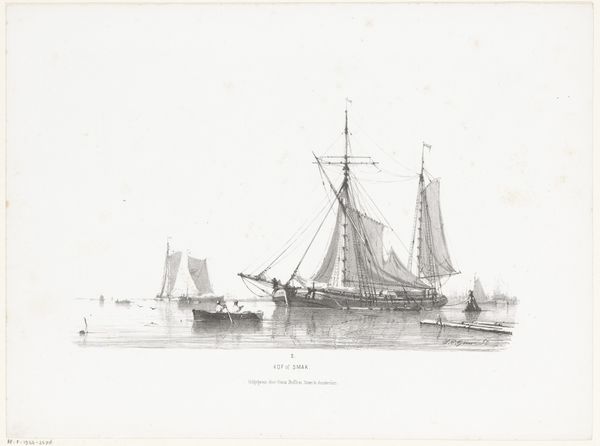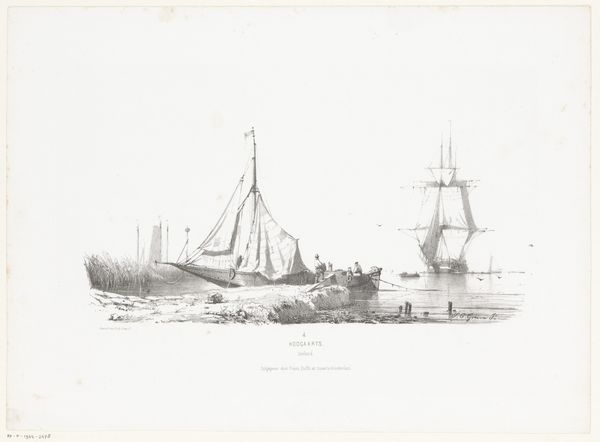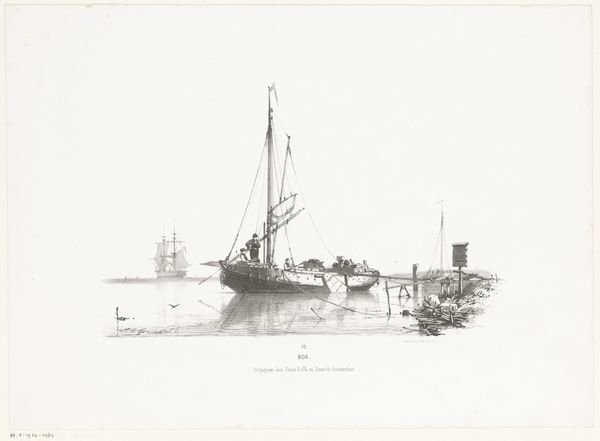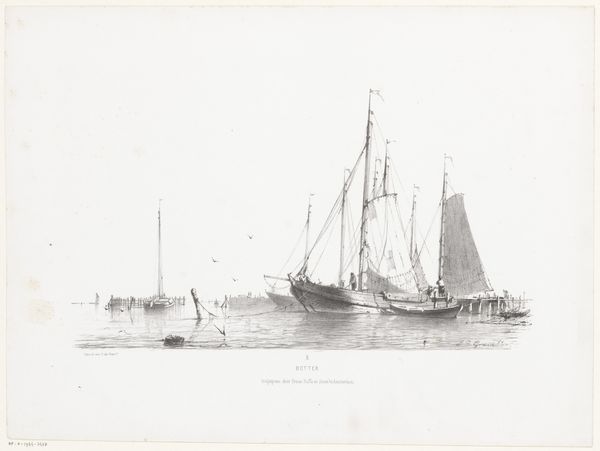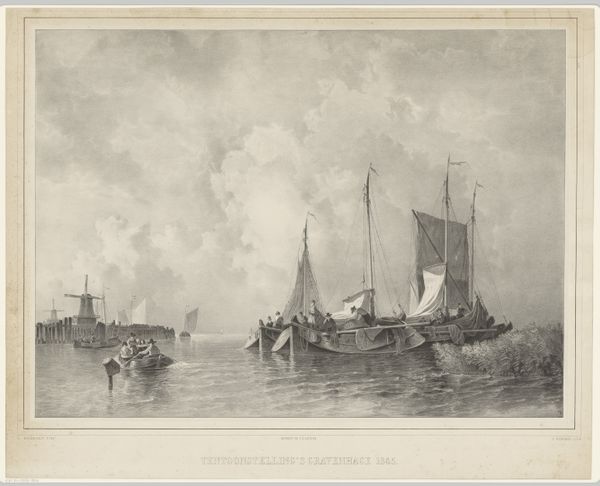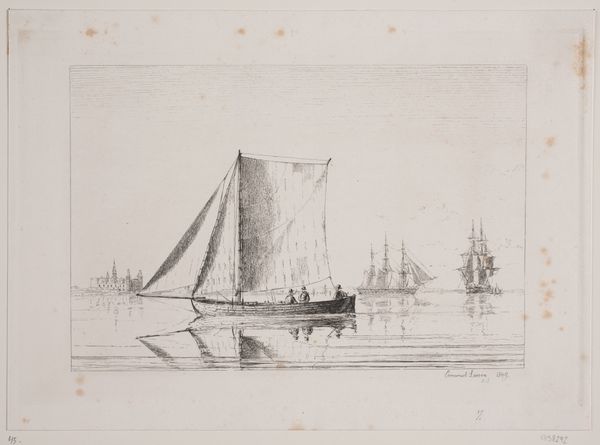
drawing, print, etching, pencil
#
drawing
# print
#
etching
#
pencil sketch
#
landscape
#
etching
#
pencil
#
realism
Dimensions: height 268 mm, width 365 mm
Copyright: Rijks Museum: Open Domain
Curator: This is “Beurtschip (Gaffelschip),” an etching and pencil drawing created around 1860 by Johan Conrad Greive. It’s part of the Rijksmuseum's collection. Editor: My first thought? A certain wistful stillness. It's so delicate, the light almost dissolving the details, especially in the rigging. There's a dreamlike quality. Curator: That lightness comes from the medium. Etchings often capture a fleeting sense of movement, particularly with water scenes like this. These ships, these "beurtschepen," were vital to the Dutch economy, acting like public transit on water. They carried goods and passengers between cities. Greive immortalizes this common sight. Editor: So, they represent connection, commerce... a floating community of sorts. Look at how those figures huddle at the boat's stern! What about that almost hazy portrayal, though? The etching softens the sharp lines we might associate with industry or even just routine transportation. Curator: Absolutely. I think that speaks to a yearning for a simpler, perhaps romanticized, past, already brewing by the mid-19th century as industrialization rapidly altered the landscape and Dutch society. He focuses on capturing a vanishing way of life and gives it a picturesque quality, more memorable and significant than if he painted it in hyperrealism. Editor: You’re right, there’s an undeniable nostalgic tug there. Water itself, as symbol, signifies journeys and transitions. The muted grays and the emphasis on light, they emphasize change. The figures aboard are small but placed deliberately: they are traveling to their own destinies. Do we have evidence suggesting Greive's political alignment, though? This work has the feel of dissent, whether social or artistic, which can be powerful when dealing with the "status quo" of landscape at that time. Curator: Greive positioned himself somewhat outside the dominant artistic circles, which gave him freedom. I am intrigued by your read about its element of political dissent. This will change the discourse surrounding the artist, and possibly his influence too. Editor: It’s those lingering symbols, cultural reminders embedded within art. This voyage is more than transit across water; it represents a nation looking both backwards and forwards.
Comments
No comments
Be the first to comment and join the conversation on the ultimate creative platform.
